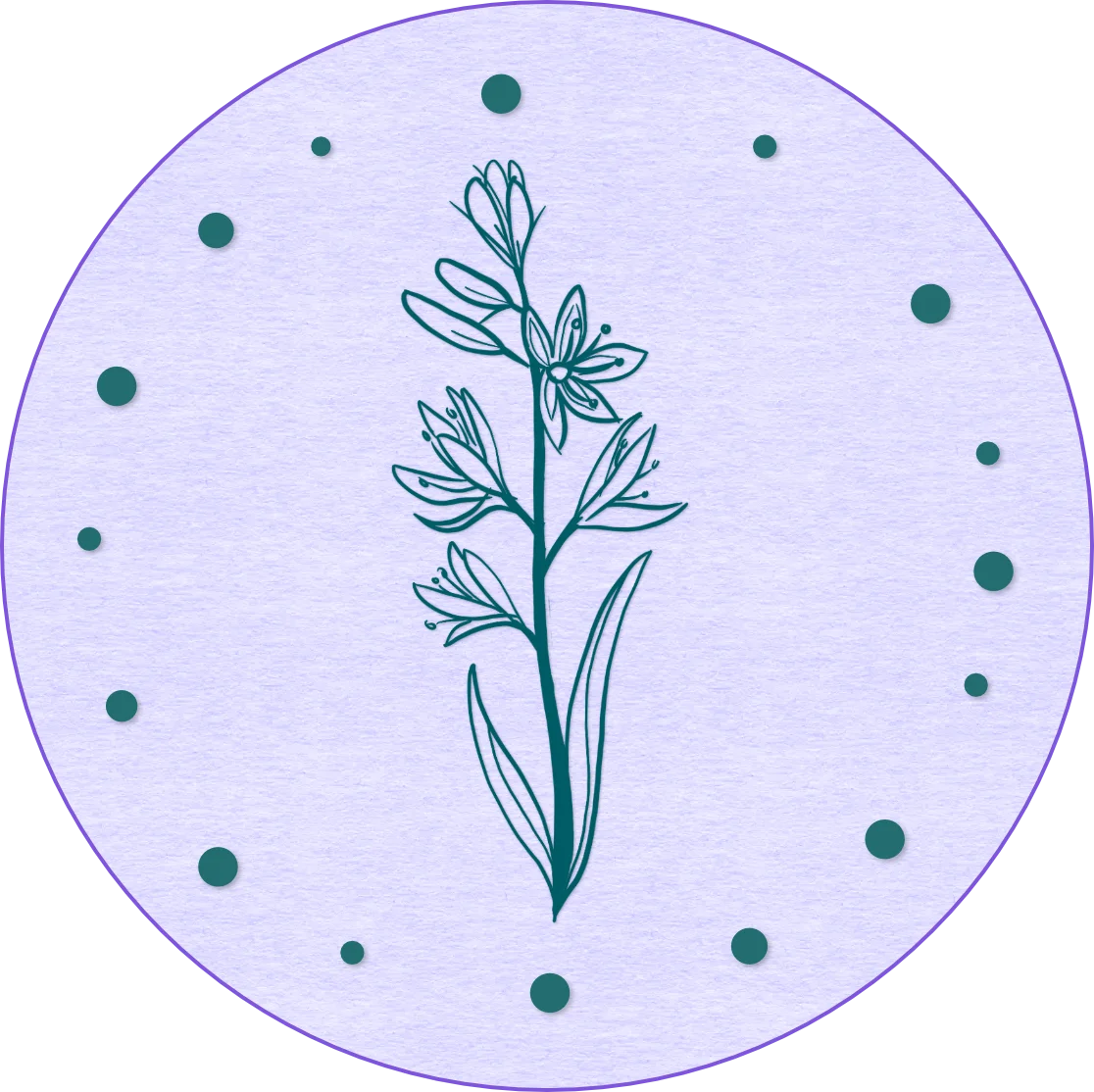
The logo we have created highlights our own attempts as faculty, librarians, staff, and students to be in relation—both with the lands on which we work, study, and learn, and with the Lək̓ʷəŋən and W̱SÁNEĆ Peoples, who hold distinct relationships with this place. We represent ourselves as points located around the growing kwetlal/ḰȽO¸EL (camas) plant as it develops and nourishes the land and people.
In our differing positionalities and orientations to and with Lək̓ʷəŋən and W̱SÁNEĆ territories and peoples, we reflect. We reflect on our responsibilities to those who have shared their knowledge about kwetlal in public and private ways. We refrain from re-sharing cultural teachings that are not ours to share. Empowering ethical relations with local Indigenous peoples and place includes sharing resources. Here are just a few:
- Cheryl Bryce (Songhees Nation), in an interview with Jeff Ganohalidoh Corntassel (Cherokee Nation), shares the significance of kwetlal (blue camas) in the context of reinstating Lək̓ʷəŋən food systems and revitalizating Coast Salish ways of caring for the lands. Some volunteer opportunities open to non-Lək̓ʷəŋən volunteers are shared here.
- The W̱SÁNEĆ Lands Trust Society was formed in 2021 to support the return and care of W̱SÁNEĆ lands. The WLTS is a contemporary expression of W̱SÁNEĆ relationships with lands and waters, and their webpage outlines ways in which non-W̱SÁNEĆ people can respect W̱SÁNEĆ rights and title.
- PEPAKEṈ HÁUTW̱ is a W̱SÁNEĆ based non-profit that leads and supports several restoration initiatives. Their webpage shares volunteer opportunities on W̱SÁNEĆ homelands, and outlines important protocols for engaging in this work.
Kwetlal grows slowly. Started from seed, kwetlal can take up to seven years before it blossoms its first flowers. It spends that time establishing a strong root system and storing energy within its growing bulb. These illustrations depict the stages of kwetlal development and growth, situating the short bloom of the kwetlal flower within this longer and so often invisible process.
